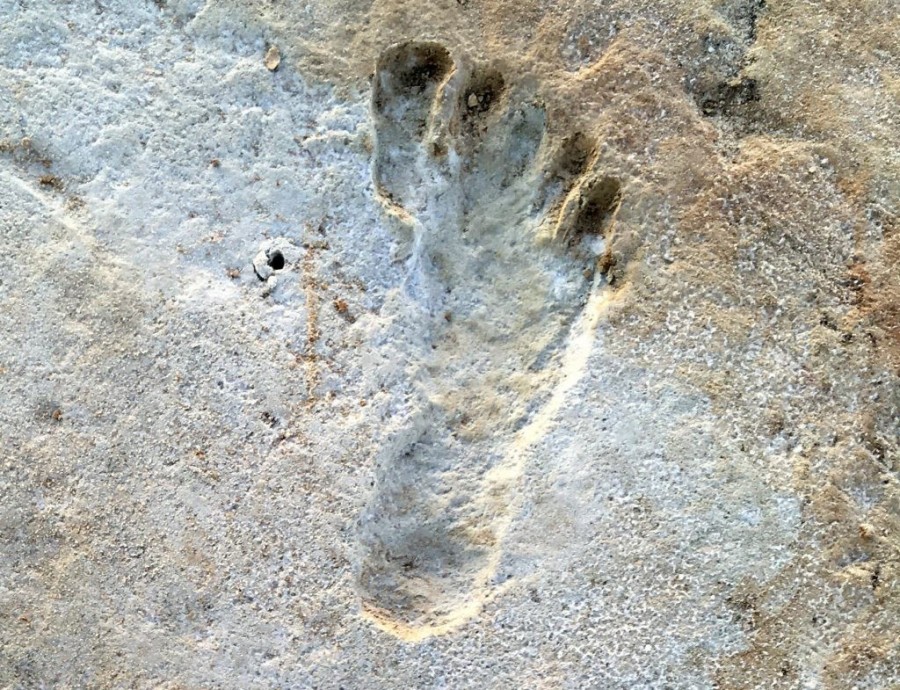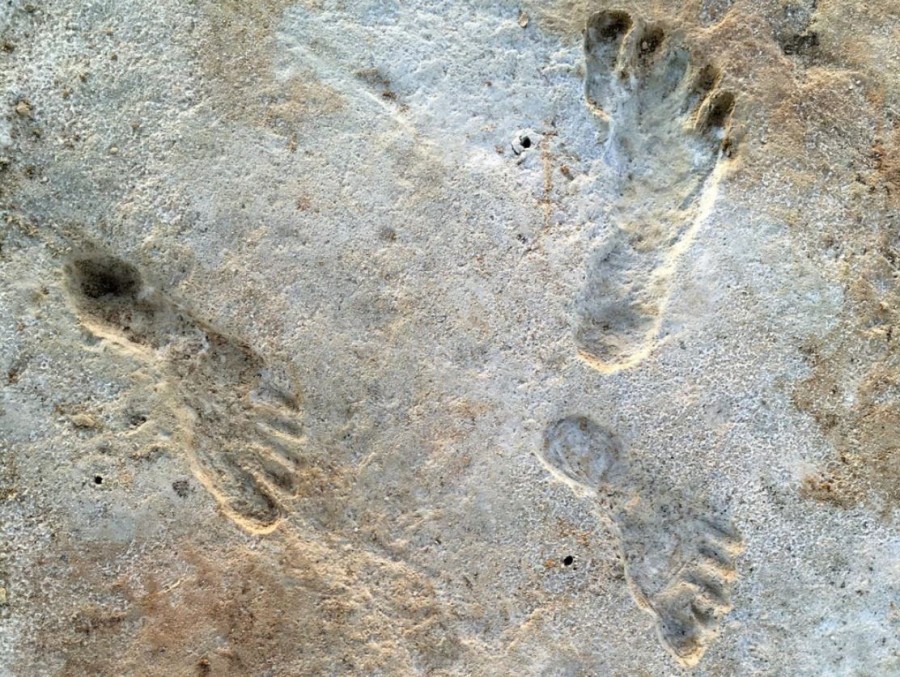Footprints in New Mexico suggest that people were making steps in North America during the Ice Age.

Human footprints at the study site in White Sands National Park, New Mexico.
Image credit: National Park Service
Two years ago, when a team of archaeologists made the mind-blowing claim that they had identified 23,000 to 20,000-year-old human footprints in New Mexico, many were surprised but not everyone was convinced. However, new research has affirmed this dating, indicating that people were wandering around North America during the Ice Age.
“The immediate reaction in some circles of the archeological community was that the accuracy of our dating was insufficient to make the extraordinary claim that humans were present in North America during the Last Glacial Maximum. But our targeted methodology in this current research really paid off,” Jeff Pigati, co-lead author of the new study and United States Geological Survey research geologist, said in a statement.

The footprints were discovered in the White Sands National Park of New Mexico. In 2021, scientists used radiocarbon dating on organic matter in the surrounding sediment layer, suggesting that the human tracks were imprinted into the ground sometime between 23,000 and 21,000 years ago.
However, the claim kicked up a storm of controversy in academic circles. The dating was based on the seeds of a common aquatic plant called Ruppia cirrhosa. Since aquatic plants like this can pick up carbon from dissolved carbon atoms in the water, some argued it could be possible that tests indicate the layer is much older than it is in reality. To settle the debate, the researchers have returned with a new method of dating the prints.
In a new study, the same team of researchers returns to work out the ages of terrestrial pollen collected from the same layer as the Ruppia seeds. Since these ground-based coniferous plants fix atmospheric carbon, there’s less chance of their dating being obscured by older carbon reservoirs.

Just as they had hoped, the tests returned with a similar date, suggesting that the human footprints were stomped in the ground between 23,000 and 22,000 years ago.
“Even as the original work was being published, we were forging ahead to test our results with multiple lines of evidence and independent chronologic techniques,” added Kathleen Springer, co-lead author of the study, in a separate statement.
“Although we were confident in the original seed ages, we wanted to develop community confidence in them as well. Our new ages, combined with the strong geologic, hydrologic, and stratigraphic evidence, unequivocally support the conclusion that humans were present in North America during the last Glacial Maximum.”

The confirmation of this date has some big implications, as it can explain when humans first migrated to North America. Until recently, the most widely accepted view was that the earliest inhabitants in the Americas were a group known as the “Clovis culture” who settled on the continent around 15,000 to 13,000 years ago. More recent discoveries have pushed this timescale back, with estimates for the arrival of these first occupants ranging from 25,000 years ago to even 33,000 years ago.
However, concrete proof is not in abundance. A lot of the evidence supporting these claims is not definitive, such as tools and bones that can potentially migrate to different sediment layers and skew dating techniques. On the other hand, a clear human footprint – together with verified dating – is pretty convincing.

“Footprints are very fragile within a sediment and cannot migrate down, as a tool or bone might do under certain conditions,” Dr Reynolds told IFLScience in 2021. “The number of footprints and their clear shape means that they are unmistakably humans.”
“We previously thought that they would move south after around 16,000 [years ago] when the ice sheets melted and a migration corridor opened, but the earlier date from White Sands shows that humans were already in the Americas. This means that humans migrated into the Americas much earlier, but still via the same route,” Reynolds added.